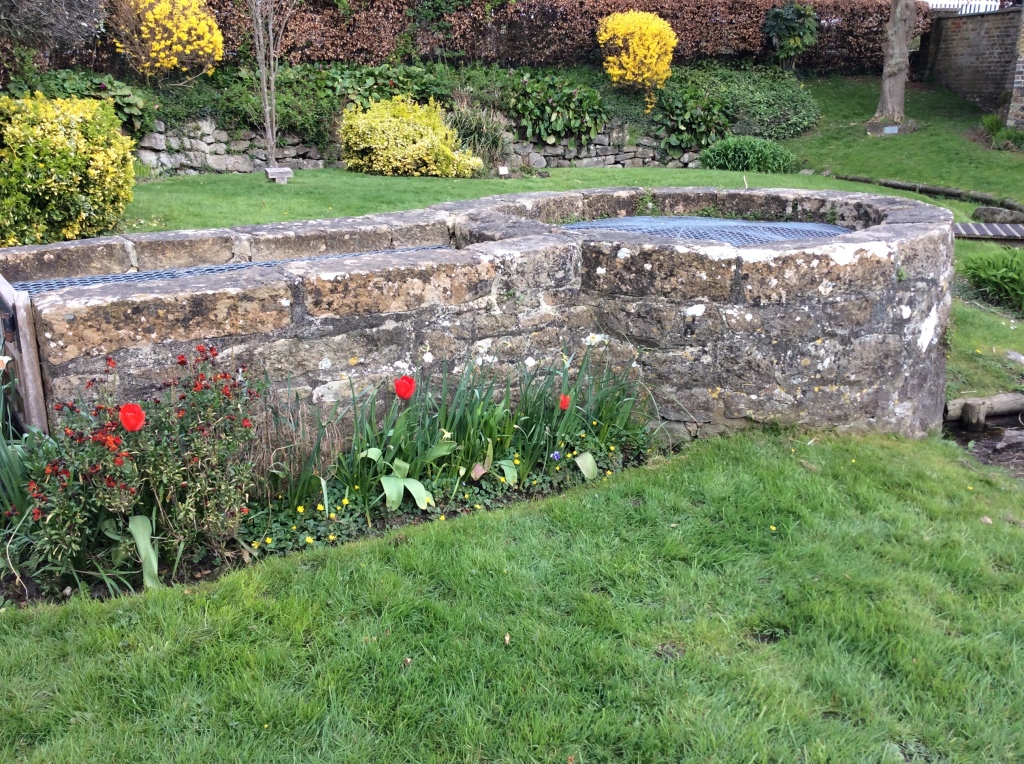St Edith’s well is a beautiful spot in the heart of the peaceful village of Kemsing near the North Downs. According to tradition, just over one thousand years ago Edith, a Saxon princess, spent her childhood in the village, and ‘hallowed by her presence, the waters were made healing.’ However, closer investigation revealed a more complex story linking Edith to a turbulent part of British history that was to set the scene for the Norman invasion seventy years later – and another story with a surprising modern-day twist.

Though accounts vary, it is widely accepted that Edith was the illegitimate daughter of King Edgar of England and a woman called Wulfthryth, who Edgar kidnapped from a nunnery at Wilton Abbey. Edgar, presumably smitten by her beauty, brought Wulfthryth to his manor at Kemsing, where she gave birth to a daughter called Edith in due course. As penance for this sinful event, Edgar was forbidden to wear his crown for seven whole years. [1]
Aside from this impulsiveness, Edgar the Peaceful seems to have been a strong and able king, unifying the country and developing institutional structures that were to endure for centuries. Shortly after an elaborate coronation that marked the culmination of his reign, Edgar died and was buried in Glastonbury Abbey. Conflict immediately erupted as Edgar left behind two sons – by different wives. One was Edward, son if his first wife Aethelflaed and the second, Ethelred, by his queen Aelfhryth who had been crowned alongside him in 973 AD. Edward the eldest son was given the crown but many nobles supported Ethelred, the acknowledged heir.

It came to a head two years later. One night in 978, Edith dreamt that she had lost her right eye; it turned out to be the exact same night that Edward, her half-brother, was murdered in Corfe Castle. According to the Anglo-Saxon chronicles, he was visiting his step mother and brother when the murder took place, causing some to lay the blame with Aelfhyrth herself. In the ensuing confusion Edith herself was (allegedly) offered the crown by Edward’s supporters, but modestly refused. In any case, Ethelred became king, and made no attempt to bring the perpetrators of the crime to justice.
Ethelred’s rule was to become one of the longest in our history, but it was far from peaceful. The Vikings came back to attack the south coast, carrying out a brutal campaign of terror throughout the 980s until eventually Sweyn Forkbeard, King of the Danes, succeeded in (temporarily) driving Ethelred out. He fled to Normandy to the kin of his wife Emma, establishing a Norman connection that was to change the course of history in 1066. After his son, Edith’s nephew, was to reign briefly as Edward Ironside, then in turn her great-nephew Edward the Confessor.
Edith died around 987 but continued to exert influence from beyond the grave. She is said to have appeared to the archbishop of Canterbury, the famous Dunstan himself, and told them that her body lay uncorrupted. Some accounts say that he exhumed the body to check, and she was canonised, supported by her nephew Edward Ironside. Her thumb was removed from her body and became an important relic. Even the Danish king Canute was said to have venerated her and asked for her intervention during a stormy crossing of the North Sea.
During her short life, she lived through the raids of another famous Viking King. The father of Sweyn Forkbeard (above) was one Harald Bluetooth, so named on account of a rotten tooth that appeared black and blue. Back home, as the king of both Denmark and Sweden, he had succeeded in unifying the various Danish tribes, an act that was to resonate with some of his fellow country-men one thousand years after his death.
During the 1990s, several tech companies including Intel, Ericsson and Nokia were trying to standardise short range radio technologies and unite all their competing efforts under one umbrella. Ericsson engineer Sven Mattisson stumbled upon the historical Harald Bluetooth at this time, a fact that he communicated to fellow Intel engineer Jim Kardach. The rest is (modern) history.

‘The name Bluetooth was borrowed from the 10th century, second king of Denmark, King Harald Bluetooth who was famous for uniting Scandinavia just as we intended to unite the PC and cellular industries with a short-range wireless link… Harald had united Denmark and Christianised the Danes. It occurred to me that this would make a good codename for the programme,’ Kardach wrote in a column later.[2]
Today Bluetooth is still the official name for the standard,
and the world-famous logo is derived from the Nordic runes for H and B. Harald
Bluetooth. So now when I visit St Edith’s well in Kemsing and take out my phone
to take a picture of the springs, I will be reminded of connections past
present and future, and marvel at how small the world can appear, thanks to
radio waves and micro waves and the Anglo Saxon Chronicles.
[1] www.wikipedia.org ‘Edith of Wilton’
[2] www.techworm.net ‘Why is Bluetooth called Bluetooth?’
Fascinating!! A wonderful read. Thank you 🙂
LikeLike
Utterly fascinating Sarah! Thank you 🙂
LikeLike